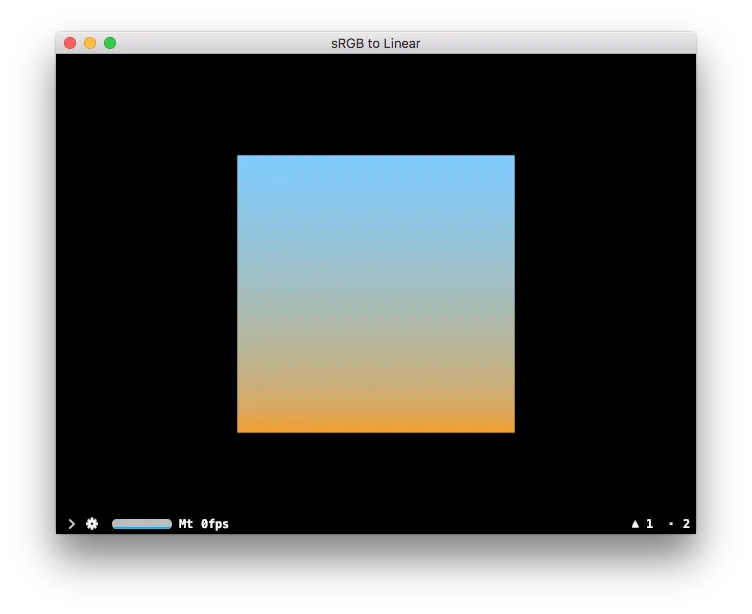我有一个渐变,由我应用于平面几何定义的SCNNode的Metal片段着色器生成。
它看起来像这样: 使用相同的着色器(Shader)应用于在Xcode Playground中渲染的MTKView时,颜色会变暗。 造成SceneKit版本颜色较浅的原因是什么? 这是金属着色器和GameViewController。
着色器:
游戏视图控制器:
它看起来像这样: 使用相同的着色器(Shader)应用于在Xcode Playground中渲染的MTKView时,颜色会变暗。 造成SceneKit版本颜色较浅的原因是什么? 这是金属着色器和GameViewController。
着色器:
#include <metal_stdlib>
using namespace metal;
#include <SceneKit/scn_metal>
struct myPlaneNodeBuffer {
float4x4 modelTransform;
float4x4 modelViewTransform;
float4x4 normalTransform;
float4x4 modelViewProjectionTransform;
float2x3 boundingBox;
};
typedef struct {
float3 position [[ attribute(SCNVertexSemanticPosition) ]];
float2 texCoords [[ attribute(SCNVertexSemanticTexcoord0) ]];
} VertexInput;
struct SimpleVertexWithUV
{
float4 position [[position]];
float2 uv;
};
vertex SimpleVertexWithUV gradientVertex(VertexInput in [[ stage_in ]],
constant SCNSceneBuffer& scn_frame [[buffer(0)]],
constant myPlaneNodeBuffer& scn_node [[buffer(1)]])
{
SimpleVertexWithUV vert;
vert.position = scn_node.modelViewProjectionTransform * float4(in.position, 1.0);
int width = abs(scn_node.boundingBox[0].x) + abs(scn_node.boundingBox[1].x);
int height = abs(scn_node.boundingBox[0].y) + abs(scn_node.boundingBox[1].y);
float2 resolution = float2(width,height);
vert.uv = vert.position.xy * 0.5 / resolution;
vert.uv = 0.5 - vert.uv;
return vert;
}
fragment float4 gradientFragment(SimpleVertexWithUV in [[stage_in]],
constant myPlaneNodeBuffer& scn_node [[buffer(1)]])
{
float4 fragColor;
float3 color = mix(float3(1.0, 0.6, 0.1), float3(0.5, 0.8, 1.0), sqrt(1-in.uv.y));
fragColor = float4(color,1);
return(fragColor);
}
游戏视图控制器:
import SceneKit
import QuartzCore
class GameViewController: NSViewController {
@IBOutlet weak var gameView: GameView!
override func awakeFromNib(){
super.awakeFromNib()
// create a new scene
let scene = SCNScene()
// create and add a camera to the scene
let cameraNode = SCNNode()
cameraNode.camera = SCNCamera()
scene.rootNode.addChildNode(cameraNode)
// place the camera
cameraNode.position = SCNVector3(x: 0, y: 0, z: 15)
// turn off default lighting
self.gameView!.autoenablesDefaultLighting = false
// set the scene to the view
self.gameView!.scene = scene
// allows the user to manipulate the camera
self.gameView!.allowsCameraControl = true
// show statistics such as fps and timing information
self.gameView!.showsStatistics = true
// configure the view
self.gameView!.backgroundColor = NSColor.black
var geometry:SCNGeometry
geometry = SCNPlane(width:10, height:10)
let geometryNode = SCNNode(geometry: geometry)
let program = SCNProgram()
program.fragmentFunctionName = "gradientFragment"
program.vertexFunctionName = "gradientVertex"
let gradientMaterial = SCNMaterial()
gradientMaterial.program = program
geometry.materials = [gradientMaterial]
scene.rootNode.addChildNode(geometryNode)
}
}


